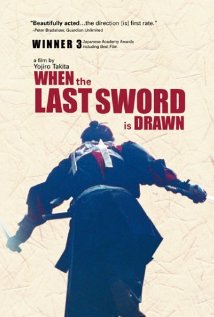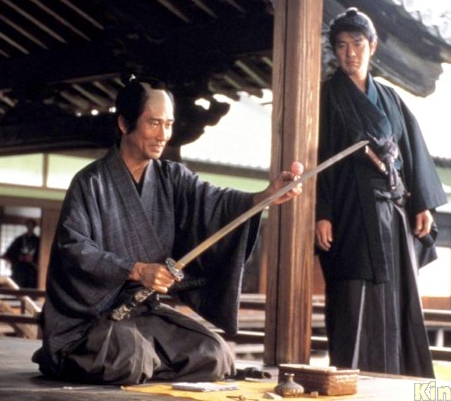
“Mibu gishi den” (When the Last Sword Is Drawn, 2003, directed by Takita Yojiro, 3.8 /5 stars) is long (133 minutes) also has a strong romance (or two). I was often unclear who the sides were in various battles, though Yoshirmura Kanichi (Nakai Kiichi, Warriors of Heaven and Earth) is clearly going down with the Tokugawa Shogunate side.
Yoshirmura sometimes seemed a clown, but proved to be terminally determined (as well as being a highly skilled swordsmen and a very loyal retainer). The flashback (from 1899 to the 1860s) structure seems gratuitously to complicate the story. It is beautifully photographed and Nakai delivers a very rich performance. Satô Kôichi is also good as the traditional samurai.

Less would have been more: 20-30 minutes could profitably have been trimmed, and the flashback expositions seem to me unnecessarily complicated. The DVD includes lengthy, but not very interesting interviews of novelist, director, and star, plus production footage. The audio and visual transfer coulda/shoulda been better.
(Like Sanada Hiroyuki the year before in “The Twilight Samurai,“ Nakai won the Japanese Academy Award as best actor in a film that was judged the best picture of the year. This movie was also about the twilight of samurai swordfighters)
©2016, Stephen O. Murray